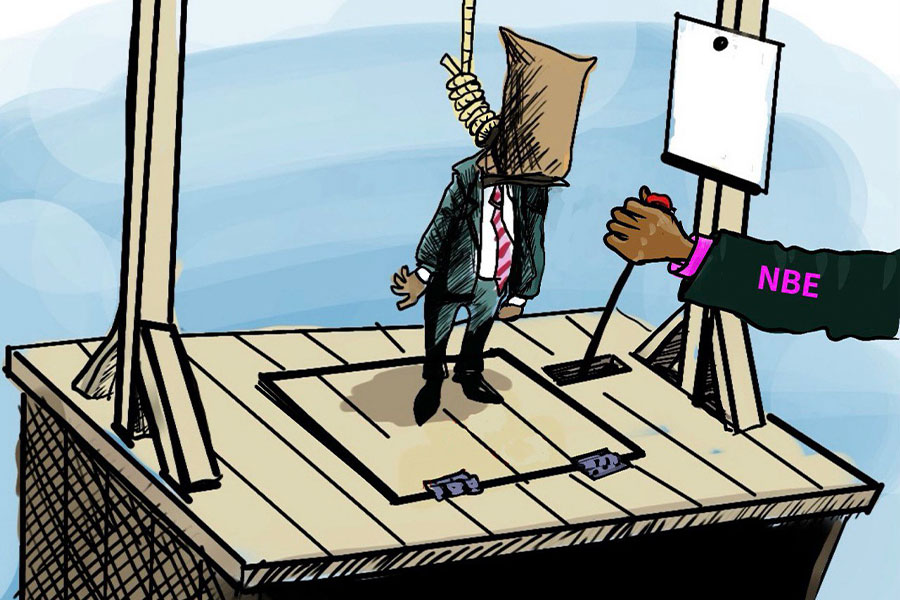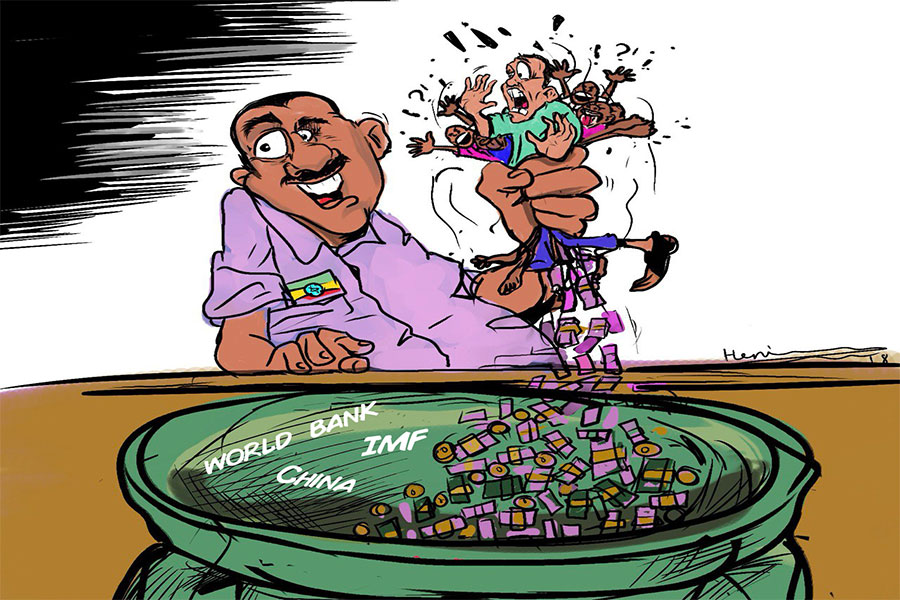
Sep 7 , 2025.
Forex trading opened without fuss on September 1, 2025, but signals from the top of the monetary system kept the banking industry alert. Beneath the surface of a calm foreign exchange market, treasury desks responded with quiet precision to a shift in leadership at the National Bank of Ethiopia (NBE) and the evolving rules of engagement.
Over the six days, commercial banks clustered around a narrow price band, even as the Central Bank compressed its own margin to near zero. On September 2, it quoted the same rate for buying and selling dollars (around 142.15 Br) and maintained the flat line through Friday, sending a clear message that stability was its priority.
The decision landed as Governor Mamo Mihretu departed after a two-year tenure that saw a controlled loosening of the currency regime. He is widely believed to be heading to the African Development Bank (AfDB), leaving a leadership vacuum and a reform project in mid-stride. His legacy, a departure from a decades-long de facto peg, was visible in the week’s restrained but autonomous pricing. By the end of the week, banks posted their own rates within a disciplined corridor.
The cross-sectional average settled near 139.60 Br on the buying side and 142.30 Br on the ask. Oromia Bank stood out, offering to buy at 142.59 Br and sell at 145.44 Br. On the other end, Berhan Bank kept its spread modest, buying dollars at 137.60 Br and selling at 140.35 Br. The range across all other banks remained within a five Birr window.
The state-owned Commercial Bank of Ethiopia (CBE), long a stabilising anchor in the market, maintained its typical posture, selling dollars at around 141.32 Br and buying at a midpoint level. Its consistently low ask rate served to tether expectations. However, Oromia Bank’s aggressive bid unveiled a push to build reserves, while Berhan’s conservative quote implied more muted demand.
Dashen Bank broke from the pack of the private big five briefly on Saturday, paying 141.90 Br, an unusual uptick interpreted by market watchers as a strategic move to meet upcoming settlements. Awash Bank, Bank of Abyssinia, and Cooperative Bank of Oromia (Coop Bank) also nudged bids upward during the week. Others, like Goh Betoch and Wegagen banks, moved in sync with the market but remained firmly within the corridor.
A sense of discipline governed daily transactions. Treasury traders, who begin each day by checking the Central Bank’s 9:00am reference rate, adjusted their screens in fractions of a Birr. Even movements as slight as 0.10 Br held weight. A million-dollar trade could represent a swing of 100,000 Br. Conversations across treasury desks confirmed that even the smallest shifts could determine client flows.
On the demand side, companies holding letters of credit and outbound travellers chased banks offering lower selling rates. Remittance recipients sought the highest dollars on offer. The quiet choreography reinforced a larger shift in the forex market of a transition from hard caps to managed flexibility.
The parallel market, where the Birr trades informally at a premium of above 160 Br to the dollar, remained a telling subplot. The gap between official and parallel rates, once above 100pc a year ago, narrowed to less than 10pc last week. Analysts credit the narrowing to regulatory tweaks under Mamo, which allowed banks to quote independently and widened the daily band. The Central Bank no longer enforces its own quote as a hard peg. Instead, it signals a midpoint around which banks are free to orbit.
This strategy, balancing policy control with operational autonomy, has kept volatility in check, but risks linger. Two major forces could soon test the reforms Mamo leaves behind.
First is policy direction. Deeper liberalisation would logically allow for broader spreads, offering banks more flexibility in price-setting. Currently, quotes remain hemmed in by the two-percent rule, which limits how far a bank’s buy and sell rates can diverge from the Central Bank’s reference rate. Nonetheless, the room allowed has proven sufficient for competitive adjustment.
In a fully liberalised regime, exchange rates would swing more widely in response to inflation and global currency movements. That is not today’s Ethiopia. But small shifts already serve as signals, of supply pressure, of liquidity conditions, of banks' risk appetite.
The structure of demand, where exporters, if emboldened by incentives, could flood the system with supply, is another factor. However, rising oil prices would likely offset this, increasing import bills and increasing dollar demand. In such a scenario, traders expect bids to test 145 Br before the month-end. Energy invoices piling up could create the kind of sustained pressure that pushes the market beyond its current containment.
For now, the visible midpoint and predictable rules are doing much of the heavy lifting. The average buying rate for the week settled at 139.60 Br, while the average selling rate stood at 142.30 Br. The Central Bank’s unchanged quote functioned as a white line down the middle. By Friday, most screens closed exactly where they had the day before, a signal of control, perhaps, not inertia.
In a market once defined by shocks and surprises, the lack of drama itself became news. Whether the calm will last depends on two things. Policy continuity and the country’s growing foreign currency needs, particularly as trade volumes rise post-rainy season.
Behind the scenes, attention turned to succession. The identity of the next central bank governor remained a point of speculation. Chat groups circulated names, from seasoned technocrats to ruling party insiders. Whoever takes the helm will face a hard choice of accelerating liberalisation to meet market expectations or holding the line to shield households already strained by the rising cost of living.
That uncertainty is mirrored in the narrow bands banks have chosen to stay within. With policy direction unclear, tactical manoeuvres rather than fundamental shifts define market activity. The forex desks have adapted to the ambiguity, treating minor advantages as victories and managing risk in a corridor of soft rules and strong signals.
Last week closed without a spike, a drop, or a ripple, but steadiness, enforced not by decree but by mutual calculation. For a market long ruled by fiat, that alone marked progress.
PUBLISHED ON
Sep 07,2025 [ VOL
26 , NO
1323]

Photo Gallery | 180476 Views | May 06,2019

Photo Gallery | 170674 Views | Apr 26,2019

Photo Gallery | 161734 Views | Oct 06,2021

My Opinion | 137287 Views | Aug 14,2021

Nov 1 , 2025
The National Bank of Ethiopia (NBE) issued a statement two weeks ago that appeared to...

Oct 25 , 2025
The regulatory machinery is on overdrive. In only two years, no fewer than 35 new pro...

Oct 18 , 2025
The political establishment, notably the ruling party and its top brass, has become p...

Oct 11 , 2025
Ladislas Farago, a roving Associated Press (AP) correspondent, arrived in Ethiopia in...